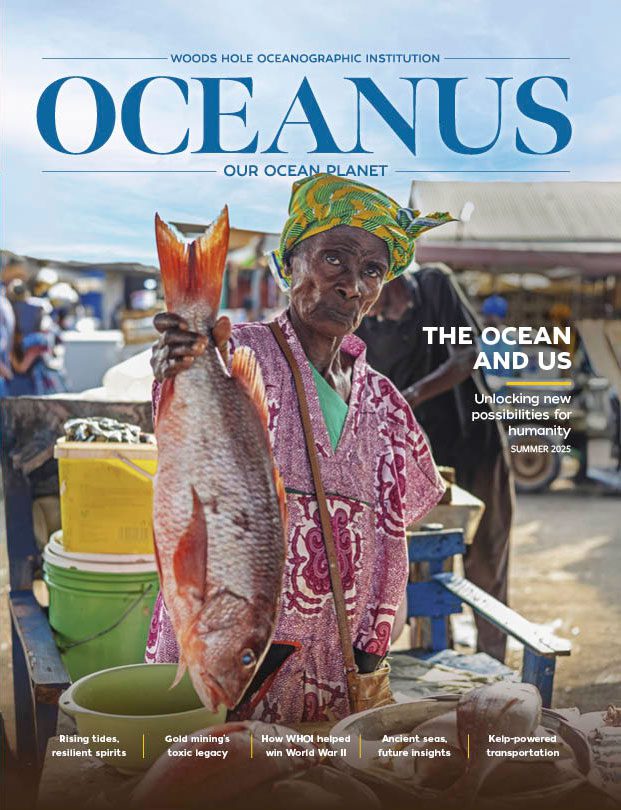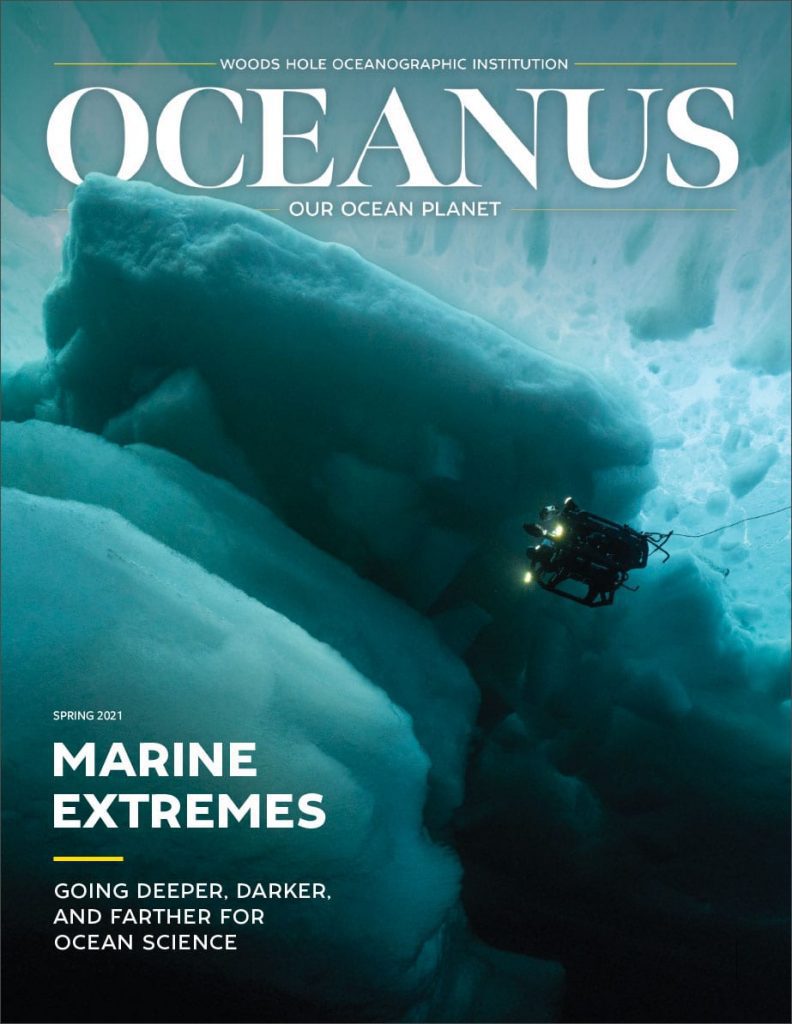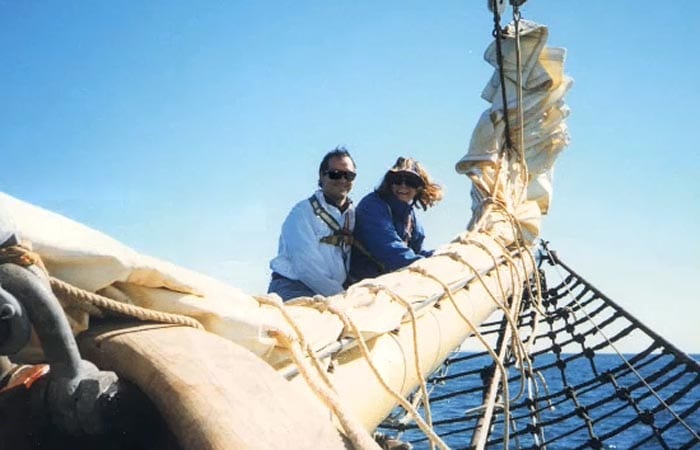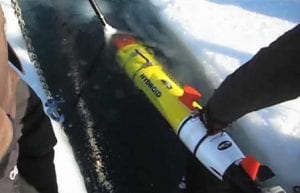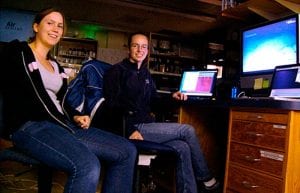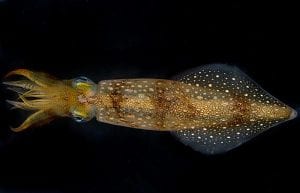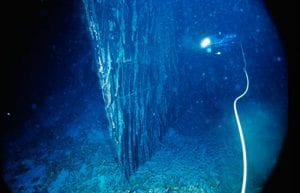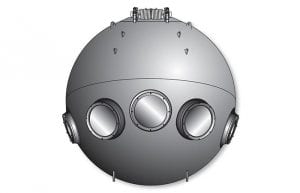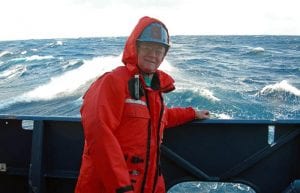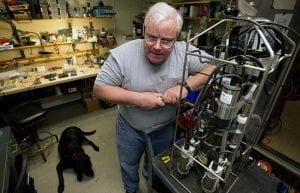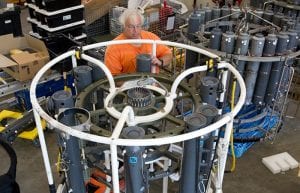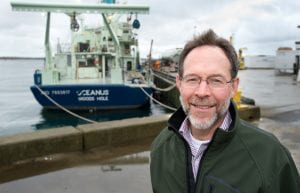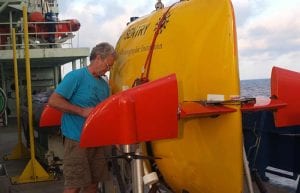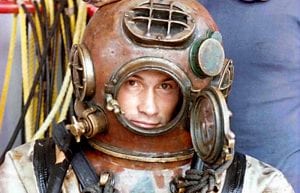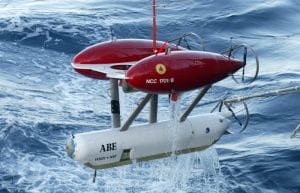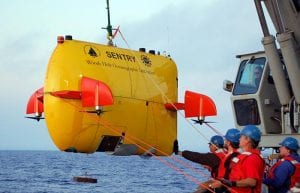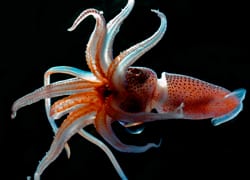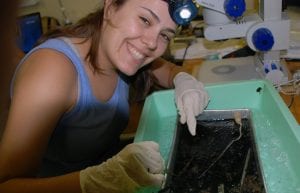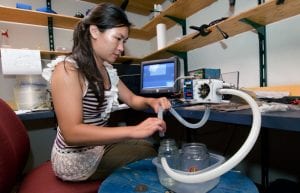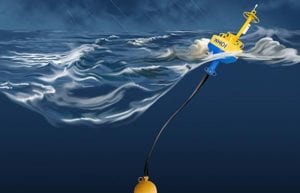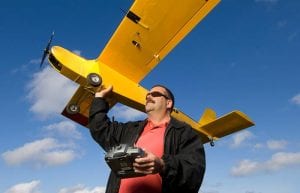Ocean Tech
Volunteer Gets an Oceanful of Experience
<!– –> It’s two in the morning, and I’m watching a remotely operated vehicle, or…
Scientists Find that Squid Can Detect Sounds
The ordinary squid, Loligo pealii, is well known as a kind of floating buffet. “Almost…
Will More Acidic Oceans Be Noisier?
In 2008, a group of marine chemists raised a red flag: As the ocean becomes…
A Titanic Tale
<!– –> In June of 1985, news came that Bob Ballard aboard the research vessel…
Alvin Gets an Interior Re-design
For more than four decades, scientists have foregone a few creature comforts to see animals,…
A ‘WHOI Way’ of Doing Things
People who have worked at Woods Hole Oceanographic Institution know it in their bones. People…
The Call of the Sea
Marshall Swartz’s lab is a Santa’s workshop of engineering gadgetry. Computer keyboards and circuit boards…
Basic Sea Cable Gets a High-tech Upgrade
In April, when the Deepwater Horizon petroleum drilling rig exploded and oil began gushing from…
New Head of WHOI Fleet Comes Aboard
<!– –> Sometimes, a career change has the feel of deferred destiny. “I was in…
A Robot Is Resurrected at Sea
Barely a month after the undersea robot ABE imploded and was lost in the depths,…
Scuba Gear and Origami
Terry Rioux has lived the life aquatic. He took a scuba diving course in college…
R.I.P. A.B.E
A pioneering deep-sea exploration robot—one of the first successful submersible vehicles that was both unmanned…
A Robot Starts to Make Decisions on its Own
It’s a lot easier to send a bloodhound to track a criminal, or your kid…
The Squid, the Whale, and the Grad Student
On the Serengeti Plains of Africa, lions stalk their prey mainly by sight. Scientists studying…
Clara Smart
Ask Clara Smart about her interests, and be prepared to receive a formidable list of…
Eleanor Bors
While her Oberlin classmates were accepting their diplomas at their graduation ceremony back in Ohio,…
Stephanie Chin
Stephanie Chin is most likely the only Summer Student Fellow whose project could one day…
Buoys Help Avert Whale-Ship Collisions
A lot of lines crisscross, run parallel, and ultimately connect in this story. The first…
Turning a Toy into a Scientific Tool
John Bailey spends most sunny weekends on a grassy field behind a movie theater on…
The Airplane That Studied the Ocean
Airplanes don’t typically come to mind when people think of ocean science. But for 25…
